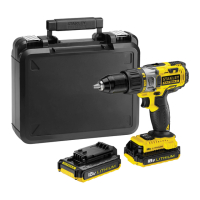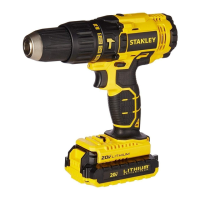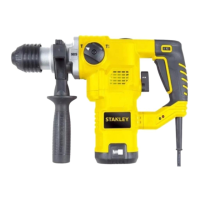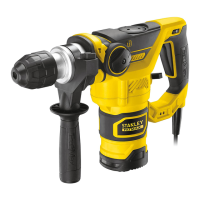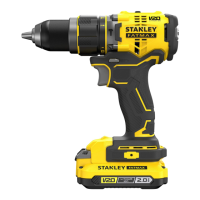HD45 User Manual ◄ 17
Problem Cause Solution
Drill does not run. Power unit not functioning Check power unit for proper ow and
pressure (7–9 GPM/26–34 LPM, 1500–
2000 psi/104–140 bar).
Couplers or hoses blocked. Remove restriction.
Flow direction reversed. Pressure and
return lined hoses reversed at ports.
Be sure hoses are connected to their
proper ports.
Mechanical failure of piston or automat-
ic valve.
Disassemble drill and inspect for
damaged parts.
Does not drill eectively. Power unit not functioning. Check power unit for proper ow and
pressure (7–9 GPM/26–34 LPM, 1500–
2000 psi/104–140 bar).
Couplers or hoses blocked. Remove restriction.
Low accumulator charge (pressure
hose will pulse more than normal).
Recharge accumulator. Replace
diaphragm if charge loss continues.
Oil too hot
(above 140 °F/60 °C).
Provide cooler to maintain proper oil
temperature.
Drill operates slow. Low ow supply from power unit. Check power unit for proper ow (7–9
GPM/26–34 LPM).
High backpressure. Check hydraulic system for excessive
backpressure (over 250 psi/17 bar).
Couplers or hoses blocked. Remove restriction.
Orice plug or internal passage blocked. Remove restriction.
Oil too hot (above 140 °F/60 °C) or too
cold (below 60 °F/16 °C).
Check power unit for proper oil
temperatures. Bypass cooler to warm oil
up or provide cooler to maintain proper
temperature.
Relief valve set too low. Adjust relief valve to 2100–2250 psi/145–
155 bar.
Drill gets hot. Hot oil going through tool. Check power unit. Be sure ow rate
is not too high causing part of the oil
to go through the relief valve. Provide
cooler to maintain proper oil temperature
(140 °F/60 °C maximum).
Check relief valve setting.
Oil leakage on drill bit. Lower piston or drive hex seal failure. Replace seals.
Oil leakage around trigger. Valve spool seal failure. Replace seals.
Low rotation torque.
Motor not completely broken in.
Continued operation or break-in with
motor break-in block.
Damage to motor clearances. Repair as required.
Mechanical binding during drilling. Take care to guide drill straight.
If symptoms of poor performance develop, the following chart can be used as a guide to correct the problem.
When diagnosing faults in operation of the hammer drill, always check that the hydraulic power source is supplying
the correct hydraulic ow and a pressure to the tool as listed in the table. Use a owmeter known to be accurate.
Check the ow with the hydraulic uid temperature at least 80 °F / 27 °C.
TROUBLESHOOTING
